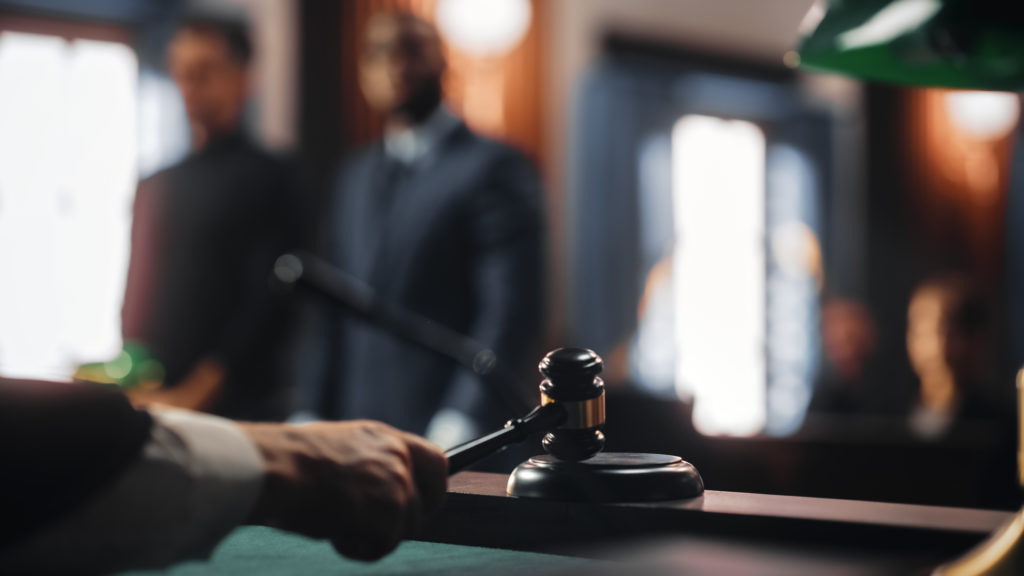The Personal Injury Lawsuit Process: What You Need To Know
Personal Injury - March 28, 2024 by Horwitz, Horwitz & Associates
If you or somebody you love sustains an injury caused by the careless or wrongful actions of another individual, company, or entity, there is a chance you will be able to recover compensation through the personal injury lawsuit process. However, personal injury lawsuits can become incredibly complicated, and this process is not something that every person goes through regularly. It is strongly recommended that a personal injury victim works with a skilled attorney who will help guide them through the process, from the initial filing of the case all the way through to trial if necessary. Here, we want to discuss a basic overview of the personal injury lawsuit process.

Deadlines are important
Personal injury victims in Illinois need to know that there is a time limit in place for them to file these claims in court. The Illinois personal injury statute of limitations is two years from the date an injury occurs. This means that an injury victim has a two-year window with which to file a lawsuit against the alleged negligent party, or they will lose the ability to recover any compensation for their claim.
Initial consultation with an attorney
Injury victims should speak to multiple attorneys to find the right fit for their case. Initial consultations are generally free, and this is where the injury victim will have a chance to discuss the details of their case with an attorney before committing to working with that particular attorney. The Chicago personal injury lawyer will have a chance to ask you questions about your case, and you will have a chance to ask them questions as well.
Filing the case in court
After you have your initial consultation, your attorney will be responsible for preparing and filing the appropriate documentation to start the case in the civil court system. You will become the plaintiff in the case as the injury victim, and the alleged negligent party will become the defendant.
The discovery phase
The next step in this process will be the discovery phase, which is the chance for both sides to exchange evidence pertinent to the case. During the discovery phase, your attorney will also be able to send a list of questions to the defendant’s attorney, as well as requests for documentation and evidence. Additionally, the attorney for the defendant will have a chance to do the same. During this process, attorneys often take depositions of any witnesses who have information pertinent to the case.
Pretrial motions or hearings
Attorneys from both sides can use pretrial motions for various reasons. This could be a motion in an effort to get the other side to provide evidence. Some motions also seek to resolve a case before it goes to trial, including motions to dismiss the case based on a lack of evidence. Sometimes, a motion for summary judgment is made, which means that the facts of the case are believed to be undisputed, and a judge is asked to grant immediate relief.
Settlement negotiations
Throughout the personal injury lawsuit process, attorneys from both sides often engage in negotiations in an attempt to reach a settlement before going to trial. In some cases, this may be done through a formal mediation ordered by the court. When this occurs, a neutral third-party mediator will work with both sides in an attempt to reach a settlement. The vast majority of personal injury lawsuits that are filed in civil court are settled before they go to trial.
The personal injury trial
If a settlement agreement is ultimately not reached, a trial date will be set. After a trial is scheduled and a jury is chosen, that jury will then hear evidence and listen to witnesses in order to determine whether or not the defendant is liable for the injuries to the plaintiff. After seeing the evidence and listening to witnesses, the jury will make a decision. If they determine that the defendant is liable, they will then determine the amount of compensation that will be awarded to the plaintiff.
Collecting your settlement or judgment
The last part of the personal injury lawsuit process, if a settlement is reached or if the jury rules in favor of the plaintiff will be the issuance of payment to the plaintiff. This may come in the form of a structured settlement or a lump-sum settlement.
Read More:


